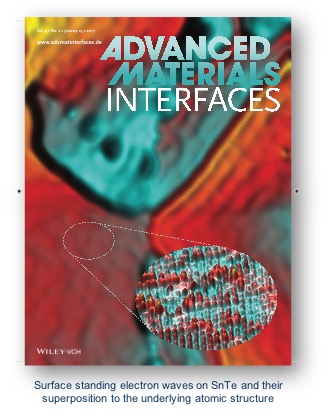Topological crystalline insulators feature conducting surface states for electrons whose existence is protected by crystal symmetry. Scanning probe microscopy experiments on SnTe reveal that such metallic topological states can coexist next to semiconducting regions. This coexistence opens new avenues for designing nanoelectronic devices by using topological surface states.
- Dagdeviren, et al., Advanced Materials Interfaces 4, 1601011 (2017)


